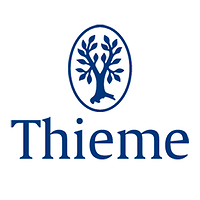DOI: 10.1055/s-0036-1596088
Georg Thieme Verlag KG Stuttgart · New York
 Apart from being used for recreational purposes and drugs of abuse, preparations from Cannabis sativa L. have a long history as medicinal tools and were instrumental for the discovery of the endocannabinoid system, a system of endogenous chemical signals involved in all aspects of mammalian physiology and pathology. The major psychoactive Cannabis constituent, Δ9-tetrahydrocannabinol (THC), potently activates the G-protein-coupled cannabinoid receptor of type 1 (CB1) and, to a smaller extent, the cannabinoid receptor of type 2 (CB2). These receptors are, in fact, present in mammalian (both central and peripheral) organs and tissues in order to be activated by two endogenous arachidonic acid-derived mediators, anandamide and 2-arachidonoylglycerol, known as endocannabinoids. In the last few years, only few non-cannabinoid plant constituents have been found to bind to and functionally interact with CB receptors. These compounds, together with other abundant (e.g. cannabidiol [CBD]) as well as minor (e.g. cannabidivarin [CBDV] or Δ9-tetrahydrocannabivarin [THCV]) THC-like compounds from Cannabis, are known as phytocannabinoids, and are being increasingly characterized from the pharmacological point of view, to the point of being proposed as potential therapeutic tools of even wider and safer use than THC. Phytocannabinoids may or may not act via the endocannabinoid system. Indeed, all phytocannabinoids, including THC, are “multi-target” compounds, and modulate the activity of enzymes (including those controlling endocannabinoid levels) and receptors belonging to all known receptors classes, i.e. G-protein-coupled receptors (GPCRs, including orphan ones), ligand-gated ion channels (such as several members of the transient receptor potential [TRP] channel superfamily), and nuclear receptors, like the peroxisome proliferator-activated receptors (PPARs). I will describe the molecular pharmacology of the most currently investigated phytocannabinoids and their current and potential future use in the clinic.
Apart from being used for recreational purposes and drugs of abuse, preparations from Cannabis sativa L. have a long history as medicinal tools and were instrumental for the discovery of the endocannabinoid system, a system of endogenous chemical signals involved in all aspects of mammalian physiology and pathology. The major psychoactive Cannabis constituent, Δ9-tetrahydrocannabinol (THC), potently activates the G-protein-coupled cannabinoid receptor of type 1 (CB1) and, to a smaller extent, the cannabinoid receptor of type 2 (CB2). These receptors are, in fact, present in mammalian (both central and peripheral) organs and tissues in order to be activated by two endogenous arachidonic acid-derived mediators, anandamide and 2-arachidonoylglycerol, known as endocannabinoids. In the last few years, only few non-cannabinoid plant constituents have been found to bind to and functionally interact with CB receptors. These compounds, together with other abundant (e.g. cannabidiol [CBD]) as well as minor (e.g. cannabidivarin [CBDV] or Δ9-tetrahydrocannabivarin [THCV]) THC-like compounds from Cannabis, are known as phytocannabinoids, and are being increasingly characterized from the pharmacological point of view, to the point of being proposed as potential therapeutic tools of even wider and safer use than THC. Phytocannabinoids may or may not act via the endocannabinoid system. Indeed, all phytocannabinoids, including THC, are “multi-target” compounds, and modulate the activity of enzymes (including those controlling endocannabinoid levels) and receptors belonging to all known receptors classes, i.e. G-protein-coupled receptors (GPCRs, including orphan ones), ligand-gated ion channels (such as several members of the transient receptor potential [TRP] channel superfamily), and nuclear receptors, like the peroxisome proliferator-activated receptors (PPARs). I will describe the molecular pharmacology of the most currently investigated phytocannabinoids and their current and potential future use in the clinic.

